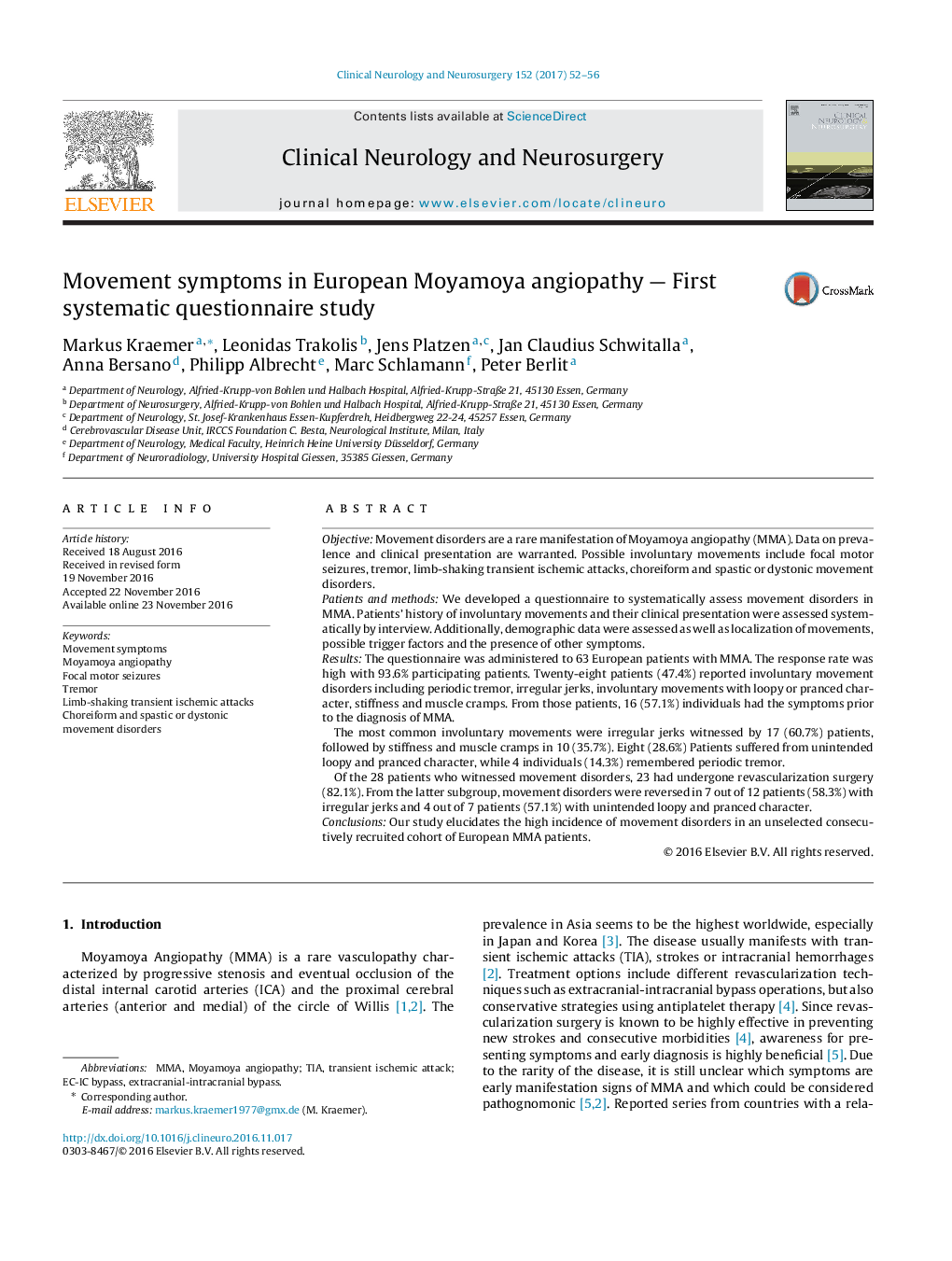| کد مقاله | کد نشریه | سال انتشار | مقاله انگلیسی | نسخه تمام متن |
|---|---|---|---|---|
| 5627035 | 1579670 | 2017 | 5 صفحه PDF | دانلود رایگان |

- High incidence of movement disorder symptoms in MMA.
- Direct bypass surgery can be used effectively to treat involuntary movements.
- MMA should be considered in the differential diagnosis of movement symptoms.
ObjectiveMovement disorders are a rare manifestation of Moyamoya angiopathy (MMA). Data on prevalence and clinical presentation are warranted. Possible involuntary movements include focal motor seizures, tremor, limb-shaking transient ischemic attacks, choreiform and spastic or dystonic movement disorders.Patients and methodsWe developed a questionnaire to systematically assess movement disorders in MMA. Patients' history of involuntary movements and their clinical presentation were assessed systematically by interview. Additionally, demographic data were assessed as well as localization of movements, possible trigger factors and the presence of other symptoms.ResultsThe questionnaire was administered to 63 European patients with MMA. The response rate was high with 93.6% participating patients. Twenty-eight patients (47.4%) reported involuntary movement disorders including periodic tremor, irregular jerks, involuntary movements with loopy or pranced character, stiffness and muscle cramps. From those patients, 16 (57.1%) individuals had the symptoms prior to the diagnosis of MMA.The most common involuntary movements were irregular jerks witnessed by 17 (60.7%) patients, followed by stiffness and muscle cramps in 10 (35.7%). Eight (28.6%) Patients suffered from unintended loopy and pranced character, while 4 individuals (14.3%) remembered periodic tremor.Of the 28 patients who witnessed movement disorders, 23 had undergone revascularization surgery (82.1%). From the latter subgroup, movement disorders were reversed in 7 out of 12 patients (58.3%) with irregular jerks and 4 out of 7 patients (57.1%) with unintended loopy and pranced character.ConclusionsOur study elucidates the high incidence of movement disorders in an unselected consecutively recruited cohort of European MMA patients.
Journal: Clinical Neurology and Neurosurgery - Volume 152, January 2017, Pages 52-56